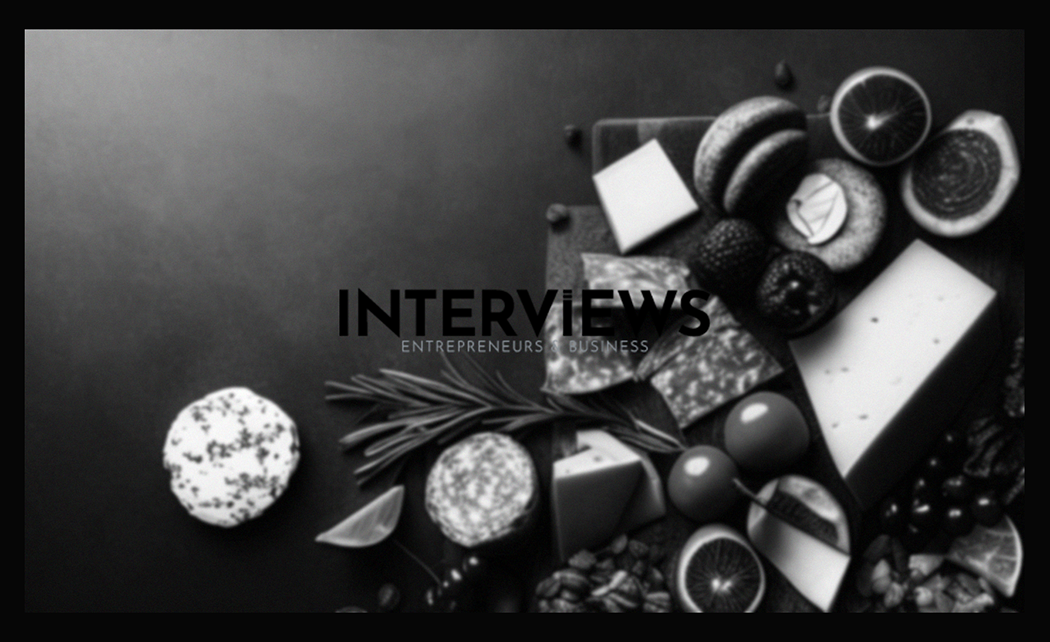So, You Wanna Be a Charcuterie Superstar? Let’s Talk Meat, Cheese, and Cold Hard Cash
Thinking of jumping into the charcuterie world? Smart choice! Who doesn’t appreciate a lovely display of meats and cheeses? But before dreaming big, let’s consider the questions. Can you earn money? Is it just visual appeal, or are there profits? Let’s unwrap this.
Is Charcuterie Actually Profitable? Spoiler: Yes, But…
Great news: a charcuterie business can be profitable like a nice wine and cheese pair. The secret? Charge more for those lovely boards than what you spend on them. Surprising, I know, but hang tight.
- Profit Margins are Key: Expect margins between 30% and 50%. Not just pocket change.
- Monitor Everything Carefully: To safeguard those margins, track your costs. Every salami slice and cracker. Keep an eye on ingredients and gas for deliveries.
- Six Figures is Possible: Many charcuterie entrepreneurs are earning over $100,000 annually. Some charcuterie kings even reach millions. Not bad for some tasty arrangement.
Legalities: Don’t Let Red Tape Ruin Your Gouda Times
Before stockpiling meats, let’s address the regulations. The fun side of snacks still has rules.
- You May Need Registration: Depending on location, register your business. Think of it as your “cheese dealer” badge.
- Taxes Matter: Registration ensures that all taxes are paid, keeping everything legal (pun intended).
- Simple Application: Don’t worry; usually, it’s just filling out an application with your business details.
- No License for Home-Based Hustles (Usually): Good news! You likely don’t need a special permit to sell charcuterie from home. But remember, rules still apply…
- Food Safety Always: Ensure boards are food-safe with proper materials and cleanliness. No one wants salmonella with their cheese.
- Storage is Important: Proper storage prevents cross-contamination. Keep things separate and cool – your customers will appreciate it.
Startup Costs: From Pennies to a Pretty Penny
How much money do you need to start? It varies, but let’s simplify it.
- Cost Range: Startup costs may range from a few hundred to over $10,000. It depends on your goals. Small beginnings or aiming for the top?
- Catering Needs Big Investment: Want a full charcuterie catering company? Expect to spend more. Still cheaper than a restaurant.
Pricing Your Boards: Finding That Goldilocks Zone
Pricing is where results appear (or disappear). You want profit but need to attract customers.
- A Board for 8? $120-$400: Expect costs between $120 and $400 based on ingredients, presentation, and sourcing.
- Grazing Tables Price Per Person: These spreads run from $15 to $50 per person. Think large and plentiful.
- Board Size Prices Vary: Smaller boards may start at $30-$40, while larger designs can reach $150 or more.
- Bulk Orders Offer Discounts: To encourage larger purchases, provide discounts. For example:
- 1/2 dozen: $15 each
- 1 dozen: $14.50 each
- 2 dozen: $14 each
Salary Scoop: Hourly Rates in Charcuterie Land
Curious about earnings from a charcuterie gig? Let’s look at hourly rates.
- Work From Home Pay: $17.81/Hour (Average): As of early 2025, average pay for home-based charcuterie pros is around $17.81.
- Batch Maker Rate: $20.34/Hour (Average): Production roles generally earn about $20.34 hourly.
- Entry-Level Pay: $13-$16/Hour: Starting positions often begin at $13-$16 hourly. Experience increases pay.
Crafting the Perfect Charcuterie Board: The Art and Science of Snackology
Let’s create a splendid board that delights and impresses. Follow some essential rules, plus pitfalls to avoid.
- The 3-3-3-3 Rule: Your Starter Guide: A helpful guide is the “3-3-3-3 rule”: 3 cheeses, 3 meats, 3 starches, and 3 accompaniments. This forms a balanced and appealing board.
- 3 Cheeses: Diverse Textures & Flavors: Include soft (brie), medium (cheddar), and hard (parmesan) cheeses.
- 3 Meats: Variety is Key: Choose different cured meats like spicy salami and savory chorizo.
- 3 Starches: Crunch Time: Incorporate crackers or breadsticks for satisfying texture.
- 3 Accompaniments: Flavor Boosters: Fruits, nuts, dips, and spreads add excellent flavor.
- The “More is More” Method: Try for a grander spread: 4 cheeses, 4 meats, 3 carbs, chocolate, nuts, jam, honey, and olives. Amazing.
- Common Mistakes: Avoid These Pitfalls! To create excellent boards, skip these errors:
- No Raw Meat/Fish: Charcuterie boards exclude raw meats or fish. Focus on snacks, not sushi.
- Avoid Extra Pungent Cheeses: Strong cheeses can overpower. Balance flavors instead.
- Pitted Olives Only: Unpitted olives can be messy. Please stick to pitted varieties.
- Crumbling Crackers? No Thanks: Use sturdy crackers that hold up to toppings without disintegrating.
- Dips with Raw Veggies! Provide dips to enhance bland raw veggies for appeal.
- Must-Haves for Success:
- The Board Itself: Any wooden board works! Be creative with shapes.
- Meats: Portioning: Offer around 2-3 ounces per person.
- Cheese: Make It Satisfying: Cheese should be cut thicker than meat for a satisfying bite.
- Fruit: Freshness Adds Color: Include fresh foods for appeal.
- Vegetables: Add Crunch: Use carrot sticks and bell peppers for variety.
- Nuts: Flavorful Crunch: Roasted or candied nuts enhance texture.
- Spreads: Flavor Galore: Employ dips or jams for flavor explosions.
- Crackers: The Base Layer: A variety of crackers and breadsticks should be available!
- Quick Idea: The Grocery Grab Board: For a quick board, consider pre-sliced cheese, grapes, honey-roasted almonds, prosciutto, salami, and bagel chips. Simple!
- Healthier Options? Yes!: Offer lean proteins like chicken or marinated veggies for healthier indulgence.
- Meat Ideas Galore: Consider Nduja, Spanish Chorizo, Prosciutto, and more when selecting meats for your board.
Marketing Magic: Getting the Word (and the Cheese) Out
Crafting amazing boards is just part of it. You need to promote…
Let people know you exist! It’s time for marketing.
- Charcuterie Workshops and Classes: Become the Guru: Offer sessions! Teach charcuterie skills. Build community and show expertise.
- Partner with Local Businesses: Team Up for Tasty Success: Collaborate with local wineries, breweries, or boutiques. Cross-promotion works.
- Food Festivals and Markets: Get Out There and Graze!: Participate in local festivals. Meet customers directly.
- Loyalty Programs: Reward Your Cheese Connoisseurs: Create a program to reward returning customers. Points for prosciutto? Yes!
- Memorable Logo and Packaging: Branding Brilliance: Invest in an eye-catching logo. Make your brand recognizable and appealing.
- Share Your Story and Values: Authenticity Attracts: Show your unique story. Customers connect with purpose beyond mere cheese sales.
Transportation Tips: Keeping Your Boards Beautiful on the Go
Delivering charcuterie takes finesse. Avoid jumbled messes.
- Plastic Wrap Fortress: Secure Your Spread: Wrap the board tightly in plastic wrap. Go overboard! Add aluminum foil for added protection.
- Separate Components for the Long Haul: For long trips, pack cheeses, nuts, and crackers separately to keep textures intact.
- Cool Storage is Crucial: Chill Out, Charcuterie: Use coolers and ice packs for cheese and meats, especially on warm days. Keep it fresh!
- Moist vs. Dry Separation Strategy: Keep wet ingredients separate from dry ones to avoid sogginess. No one likes a soggy cracker.
Shelf Life Lowdown: Freshness is King (or Queen)
Charcuterie tastes best fresh, but how long does it last?
- 2-3 Days for Optimal Deliciousness: Consume within 2-3 days for peak freshness. Quality decreases afterward.
- Fresh Fruit Fast Track: Eat it First!: Fresh fruits perish quickly. Enjoy them promptly for the best flavor.
Why is Good Charcuterie Pricey? The Value Proposition
Wonder why good charcuterie costs so much? It’s more than fancy packaging!
- Quality Comes at a Cost: Ethical & Delicious: Good charcuterie means better animal welfare, higher quality diets, and sustainable farming. You’re paying for quality.
- Jamón Ibérico: The King of Expensive Ham: Jamón Ibérico is one of the priciest meats worldwide for a reason. It’s a delicacy.
Charcuterie vs. Grazing Boards: What’s the Real Difference?
Are charcuterie boards and grazing boards the same? Not quite. Charcuterie is a subset of grazing.
- Charcuterie: Meat-Centric Marvels: Traditional charcuterie boards focus on cured meats. Meat is the star!
- Grazing Boards: The Whole Delicious Universe: Grazing boards include cheeses, fruits, veggies, nuts, dips – a broader selection!
Board Dimensions: Size Matters (When it Comes to Cheese)
Need to choose a board for gatherings?
- Medium Boards: The Sweet Spot for 6-8 People: An 18-inch diameter medium board suits groups of 6-8 people well. Just right for gatherings.
Charcuterie Trends: Keeping it Fresh and Forward-Thinking
The charcuterie scene is evolving! What’s trending now?
- Plant-Based Charcuterie: Vegan Vibes are Here to Stay: Plant-based charcuterie is gaining popularity. Vegan cheeses, plant-based deli slices, and fresh fruits shine.
Must-Buy Items: Setting Up Your Charcuterie Arsenal
Stocking up for charcuterie? Here’s your shopping list:
- The Board (Obviously!): Wooden, slate, or marble boards – choose one.
- Meats: A Variety is Key: Prosciutto, salami, chorizo, ham – explore the aisles!
- Cheeses: Hard, Soft, and Everything In Between: Cheddar, brie, goat cheese – create a cheese medley.
- Fruits: Fresh and Dried: Grapes, figs, cranberries – sweeten your board.
- Vegetables: Crunch and Color: Carrots, celery, olives – add freshness and color.
- Nuts: Roasted and Raw: Almonds, walnuts, pistachios – provide textural contrast.
- Spreads: Jams, Mustards, Dips, Oh My!: Fig jam, honey, hummus – flavor enhancers!
- Crackers: The Foundation: Variety packs of crackers, breadsticks, pita chips – essential!
That’s it! Charcuterie is not just about arranging snacks; it’s a business, an art form, and a tasty career. With planning, creativity, and lots of cheese, you can achieve charcuterie superstardom. Now go forth and create edible masterpieces!





